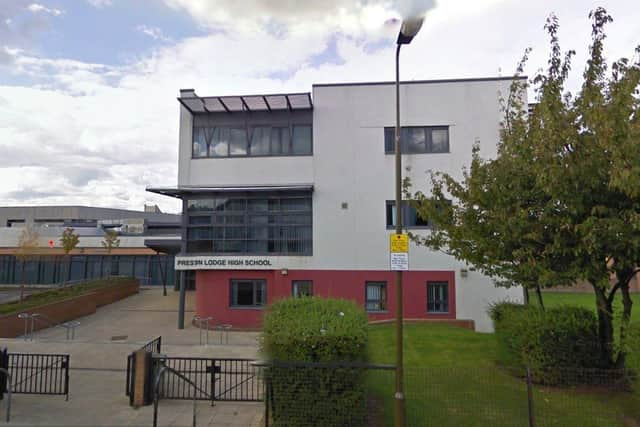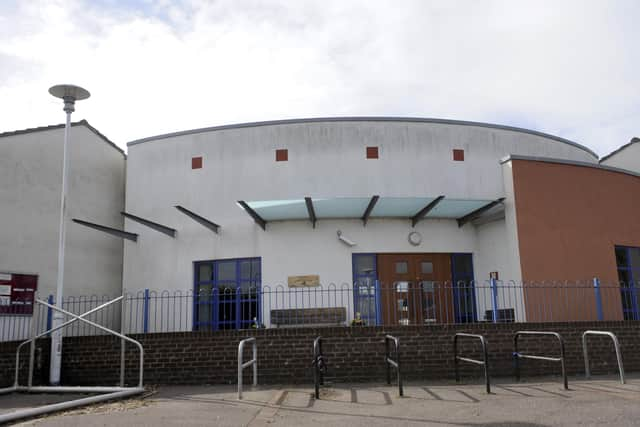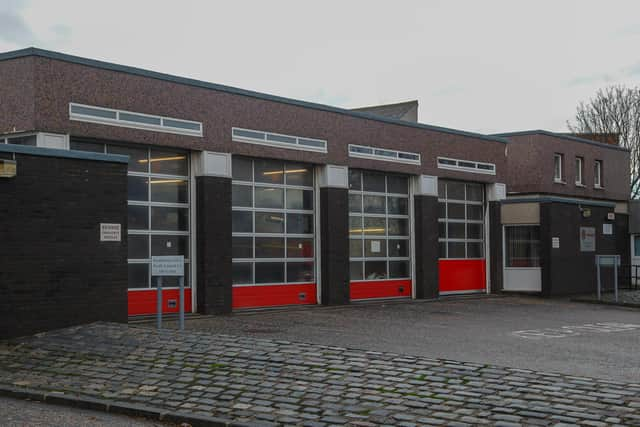Edinburgh and Lothian buildings affected by RAAC concrete: Everything you need to know
and live on Freeview channel 276
It’s dominating headlines and prompting lots of questions about buildings up and down the country. But what is the position with the cheap, crumbling concrete, known as RAAC, in Edinburgh and the Lothians?
RAAC – Reinforced Autoclaved Aerated Concrete – is a lightweight precast concrete, cheaper than traditional concrete, which was frequently used in public sector buildings in the UK between the mid-1960s and the 1990s. It is mainly found in roofs, but also sometimes in floors and walls. Potential problems have been known about for some time but concerns have increased as the authorities have stepped up warnings about the risks of sudden collapse.
Advertisement
Hide AdAdvertisement
Hide AdIn an update on Tuesday, September 5, Social Justice Secretary Shirley-Anne Somerville told the Scottish Parliament that 37 schools in Scotland have now been identified as having the cheap concrete, with investigations still continuing.


Eight schools in Edinburgh are affected – though two of those are primary schools sharing one campus. The inspection programme, covering all of the city’s 123 primary, secondary and special schools has been going on for several months. The first two schools identified with a significant RAAC issue – Cramond and Trinity primaries – were discovered in April.
Which schools in Edinburgh are affected?
No schools in Edinburgh have had to close because of RAAC, but two primary schools have had to bring in temporary classrooms to accommodate some pupils while investigations and remedial work takes place. They are Cramond Primary, where the temporary classrooms are in the school’s own grounds, and Trinity Primary, where the temporary units are in the grounds of Trinity Academy.
And there are five other school sites where RAAC has been found but there has been no need to decant pupils. These are Currie High School, Pentland Primary, Lorne Primary, Colinton Primary and the joint campus of Fox Covert Primary and St Andrews Fox Covert RC Primary.
Advertisement
Hide AdAdvertisement
Hide Ad

The council says different parts of the building are affected in different schools - classrooms, kitchen, gym hall and corridors. Where RAAC is identified, that part of the school is cordoned off for detailed survey work and any follow up remedial action. Surveys are continuing across the school estate.
There is no estimate at this stage of how long the repair or replacement work will take or how much it will cost.
Are schools in West Lothian affected too?
West Lothian was ahead of most local authorities in starting to tackle the problem of RAAC after having to pay £6 million two years ago for repairs to buildings which included the cheap concrete, including the Lanthorn Centre in Dedridge, Livingston, Whitburn community centre and Balbardie Primary school in Bathgate. The council has taken a proactive approach on the issue and has already carried out detailed surveys of its school estate and work at a number of sites has been completed.


The schools affected are:
Balbardie Primary School in Bathgate – RAAC is present in a school extension and work on a replacement roof for that area is under way, with £1.8 million fully funded by West Lothian Council.
Advertisement
Hide AdAdvertisement
Hide AdRiverside Primary in Livingston is currently closed and P1-P7 children have been relocated to the nearby former Beatlie School, while nursery-age children have been relocated to Letham Nursery. A bid has been submitted to the Scottish Government for funding.
Windyknowe Primary in Bathgate – RAAC is only present in the nursery area and a small section of the first floor. Replacement roof works are under way for that area, with £1.3 million fully funded by West Lothian Council.


Knightsridge Primary in Livingston was temporarily closed in November 2022. A £6.7 million programme of work began in December 2022 and is ongoing, fully funded by West Lothian Council.
St. Kentigern’s Academy in Blackburn – a proposal to demolish the parts of the school affected by RAAC and construct a new wing has been approved by the council executive, with the potential costs estimated at up to £35 million. The council has committed £20 million to the works and an approach has been made to the Scottish Government for the rest of the funding required.
Advertisement
Hide AdAdvertisement
Hide AdApart from the schools, work to remove RAAC planks has recently been completed at Fauldhouse Partnership Centre, with work ongoing at Lanthorn Community Centre in Livingston and Whitburn Community Centre. This has resulted in funding in the region of a further £7 million being provided by the council to remove the RAAC roof panels in community facilities. RAAC has also been identified at Stoneyburn Community Centre, which the council says does not require work at this time but is being monitored.
And what’s the situation in East Lothian and Midlothian?
Inspection works in East Lothian confirmed the presence of RAAC in parts of Preston Lodge High School in Prestonpans and it was decided before the summer holidays to close 23 of the 71 classrooms while work is carried out. New S1 students are attending Preston Lodge for practical lessons such as Craft, Design and Technology, home economics, ICT, music and science, while Preston Lodge staff are using "Home Rooms" at other local schools or community facilities to teach other subjects to S1 students. PE lessons are taking place at either Meadowmill Sports Centre or the Pennypit Centre.
Now it has been confirmed RAAC is also present in the dining hall at Ross High School, Tranent. But the council says independent specialist engineers have said the dining hall remains safe to use. "The condition of the RAAC which is present at Ross High will be closely monitored to establish whether any work might be required in future."
The gym hall at St Joseph’s School, which has been closed since 1997, has also being identified as containing RAAC. However, this building is mothballed and so not in use. Survey work has confirmed that RAAC is not present in any other East Lothian Council school buildings.
Advertisement
Hide AdAdvertisement
Hide AdBut parts of the Brunton Hall in Musselburgh – including the performance venues and top-floor office spaces – are currently closed after it was discovered parts of its roof were constructed from RAAC. The Brunton Theatre Trust is in discussion with the council about the possible temporary lease of the Haddington Corn Exchange as a venue for performances.
And a small part of North Berwick Sports Centre – containing two squash rooms, trampoline room and a changing facility – is also affected and currently closed as a result. Repairs are being arranged. The rest of the centre, including the main part of the building, remains operational and open to the public.
Midlothian Council says none of its schools is affected. A spokesperson said: “We can confirm that no RAAC has been found in recent surveys of the schools estate in Midlothian.”
Are hospitals in Edinburgh and the Lothians affected too?
The Lauriston Building, which serves as a large outpatient centre close to the former Royal Infirmary site in Lauriston Place, was named in August as one of eight NHS Lothian buildings with a high risk of having RAAC.
Advertisement
Hide AdAdvertisement
Hide AdThe other sites include the Princess Alexandra Eye Pavilion in Chalmers Street, which was declared unfit for purpose in 2014 and is due for replacement. The Scottish Government has promised a new eye hospital next to the Royal Infirmary at Little France, but not until late 2027 at the earliest, and there are concerns that the project is “under threat”.
The other NHS buildings listed at high risk of having RAAC are Bonnyrigg Health Centre in Midlothian; Tranent Medical Practice in East Lothian; Stoneyburn Health Centre in West Lothian; the Cullen/Rivers Centre extension at the Royal Edinburgh Hospital; a link corridor/X-Ray at the Royal Edinburgh Hospital; and a gas store at the Western General Hospital.
A report to the NHS Lothian board said: “There is a risk that survey findings may raise a requirement for immediate partial or whole building closure as has been seen in other public organisations (for example educational settings) or the installation of intrusive temporary supports as an interim safety measure.”
Is there RACC in universities and colleges as well?
Edinburgh University says it has identified eight of its buildings as containing RAAC, though it did not name them. In reply to a Freedom of Information request from the Scottish Lib Dems, the university said: "Initial inspections have taken place in each of these buildings, and more detailed surveys are being carried out. No significant issues have been identified to date (August 29).”
Advertisement
Hide AdAdvertisement
Hide AdHeriot-Watt University said five non-residential buildings had been found to contain RAAC in 2019. The Lib Dems said: “Heriot-Watt confirmed the 2019 survey did not show any major issues but the 2022-23 showed one of the planks which had been identified had become misplaced.” The university also said: "We have given our insurance providers copies of the most recent survey reports and we are currently carrying out repairs. The area has been closed to general access until repairs are completed."
Edinburgh Napier University told the Lib Dems that RAAC had been identified in one of its campus buildings. It added: "Due to the location of RAAC no further action is being taken. The university, however, is testing the materials to ascertain its condition."
Edinburgh College said RAAC was present in one area on the Sighthill campus – roof panels above the ground-floor teaching spaces in the motor vehicle and electrical workshops. The college said: "Annual structural surveys have been carried out since 2019, by a qualified external consulting engineering company. Reports have been produced with recommendations and where required re-enforcement remedial steel work has been undertaken."
Queen Margaret University and Newbattle Abbey College both said they had not found any RAAC.
Advertisement
Hide AdAdvertisement
Hide AdFire stations
The Scottish Fire and Rescue Service has confirmed that defects in the roof construction were identified in 2019 at 14 community fire stations across Scotland.
These include Crewe Toll, Marionville and Liberton in Edinburgh, as well as Dalkeith, Livingston and Tranent.
Temporary supports have been installed to reinforce areas of roofing, but operations from the stations have been maintained.
Iain Morris, SFRS acting director of asset management, said: "In most cases, the safest and most cost-effective solution is to rebuild. However, as a service we do not have the necessary capital budget provision to rebuild these locations or meet the continuing capital backlog to maintain or upgrade our estate."